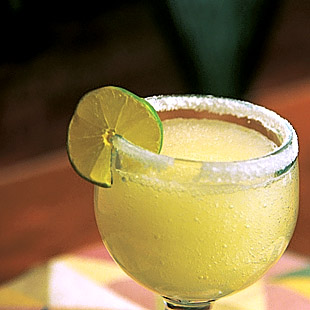| click here for the |
| front page |
| features |
| fire lookouts |
| flytying |
| beavers |
| craters of the moon |
| arts |
| peter woytuk |
| printmaking |
| handmade guitars |
| living |
| high desert gardens |
| pavers |
| summer fitness |
| recreation |
| skateboarding |
| danny thompson mem |
| galena |
| dining |
| salads |
| margaritas |
| calendar |
| summer 2003 |
| to-do |
| sun valley essentials |
| listings |
| galleries |
| dining |
| lodging |
| fitness |
| golf |
| equipment rentals |
| outfitters + guides |
| maps |
| ketchum street map |
| sun valley street map |
| local art galleries |
| Galena summer trails |
| fire lookouts: Idaho |
| fire lookouts: locator |
| the guide |
| last winter |
| advertising |
| about us |
| copyright |
| Copyright
© 2003 Express Publishing Inc. All Rights reserved. Reproduction in whole or in part in any form or medium without express written permission of Express Publishing Inc. is strictly prohibited. |
| Produced
& Maintained by Express Publishing, Box 1013, Ketchum, ID 83340-1013 208.726.0719 Voice 208.726.2329 Fax info@svguide.com |
| The
Sun Valley Guide is distributed free twice yearly to
residents and guests throughout the Sun Valley, Idaho resort area
communities.
Subscribers to the Idaho Mountain Express will receive the Sun Valley Guide inserted into the paid edition of the newspaper. |


Viva Margaritas
by Greg Stahl
In a sense, margaritas served in mountain towns are liquid oxymorons.
Despite their rising popularity, they’re contradictions of drinking’s subtle sensibilities. The mountains are whisky and beer country, where rugged men and women earn the right to butt kickin’ drinks after hard days of manual toil. The fruity margarita is an “umbrella drink” reminiscent of bathing suits, sand beaches and suntan lotion.
But Sun Valley is a winter and summer vacationland, and there’s hardly a more suitable or thirst quenching alcoholic beverage on a relaxing Sun Valley afternoon than the margarita.
Despite its Mexican roots, the margarita has become a north-of-the-border mainstay in restaurants and bars and at backyard barbecues. Like Billy Idol in the 1980s and Hula Hoops in the 1950s, margaritas are in, and everybody’s trying them.
“It’s our largest
selling drink by far,” says Mary Reagle, who tends bar at the Pioneer
Saloon in Ketchum. “It’s what I drink. I drink them all
the time.”
It’s difficult to put a finger on what makes the drink so popular. One local bartender theorized that people enjoy getting two shots—Cointreau or triple sec and tequila—for the price of one.
Doug Dryer, a Sun Valley vacationer, said there’s more to it than that.
“I think there’s a
certain mystique of the tropics and Mexico. There’s a certain quality or
mystique about ordering a drink that originated in these exotic lands,”
Dryer, a Bend, Ore., resident, said during a Sun Valley snowboarding
trip last winter.
As a former employee at Kimos Restaurant in Lahaina, Maui, Dryer has
served his fair share of margaritas and Mai Tais.
“There’s a little romance about the drinks of the natives, and Mexico is one of those places,” he said.
The origins of the margarita are written about at length, and different accounts all boil down to one primary thing: no one knows for sure where the drink came from.
Most lore says the drink was either invented in Tijuana by Danny Herrera in the late 1930s, in Ciudad Juarez by Pancho Morales in 1942, in Acapulco by Texan Margarita Sames in 1948, or in Puebla by Danny Negrete in 1936.
According to one of those accounts, Sames invented the margarita by combining her two favorite spirits: Cointreau and tequila. Her husband gave the drink its name by presenting his wife with glassware etched with “margarita!”
Suffice it to say that in the beginning, people made margaritas with roughly equal parts tequila, Cointreau and lime juice. But Mexican limes are different than what we Yanks are used to, and the evolution of the American margarita appears to parallel a search for sweet, fruit- or lime-like mixer.
The standard in many parts of the United States is pre-mixed sweet and sour mix, “on the gun” at bars and available over-the-counter at grocery stores. It is generally very sweet and used in drinks like whiskey sours and Long Island ice teas.
“A margarita’s only as good as the sweet and sour you use,” says Sun Valley Inn bar manager Nickey Buchwalter. But Buchwalter says he gets occasional requests for “real” margaritas. He calls them “wolferitas.” Either way, they’re about an ounce of tequila, a half-ounce of Cointreau or triple sec and an ounce of lime juice. The concoction is shaken with ice and poured through a strainer.
But if you ask for a wolferita at Whiskey Jaques’ in Ketchum, bartender Matt Kiker will serve a margarita prepared as a shot. After talking with local margarita makers, the one hard and fast rule regarding the drink appears only to be that tequila, Cointreau or triple sec, and some kind of fruity flavor are required.
A rainbow of margarita flavors—Catalina, coco, strawberry, honeydew and jalapeno, to name just a few—are becoming common, but most local restaurants and bars serve either old fashioned sweet and sour or strawberry versions. It is clear, however, that even the base ingredients can be manipulated in a myriad of ways.
On the rocks or
crushed? Cointreau, triple sec or both? Silver or blue agave tequila?
Tumbler or martini glass? Lime wedge, wheel or squeeze? Salt
or no? The list goes on and on.
So, as you’re sipping
the summer away under the hot Sun Valley sun, pull up a piece of deck or
get out
your blender. Ordering or making margaritas will hardly make you a
maverick, but it will give you a taste of the exotic and quench a hot
afternoon thirst.











